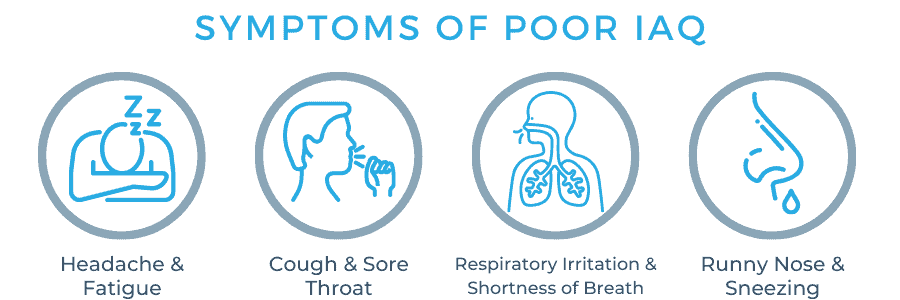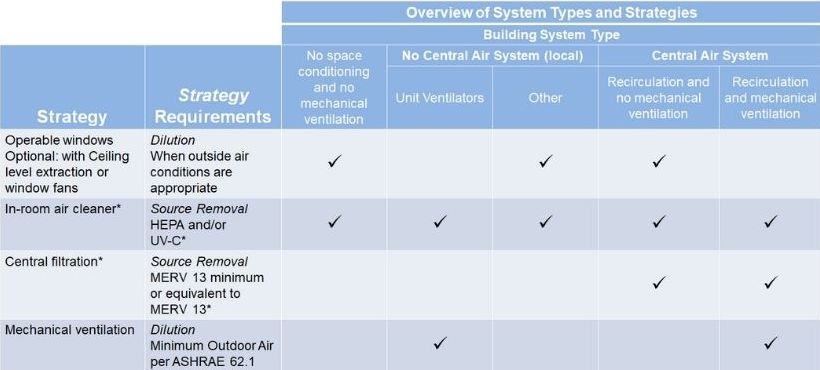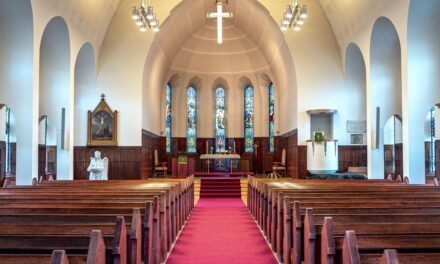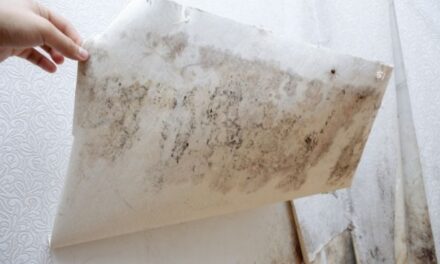Tips for Churches to Ensure Good Air Quality
Places of worship are often seen as a sanctuary for prayer, spiritual growth, and the coming together of like-minded individuals. Many rituals, actions, and behaviors occur on a regular basis within these environments, carried out by their respective religious communities. To many, places like the church, temple, mosque, or shrine are considered a safe haven; though, a factor common to all worship settings but often unconsidered is indoor air quality. With variables like poor ventilation, mass gathering of people, and pollution created through ritual activities, the quality of air is far from safe.
Indoor air quality within places of worship has become a large area of concern with the recent risks of airborne illness transmission, however there is much more of a need for better air quality beyond a single virus. Breaking down what affects air quality in churches and temples, from the burning of candles to a choir assembly, gives a better understanding of how to improve it for safer practice.
Follow along for more information on ventilation concerns in places of worship, indoor air quality guidelines for churches, and how churches can improve indoor air quality.
What Affects Indoor Air Quality in Places of Worship?
Sacral buildings, like other indoor environments, can be described as their own ‘micro-climate’ of sorts; the air quality created in these spaces is altered or maintained by its occupants, air conditioning systems, and external factors like outdoor air. The routine of hosting large masses of people during short segments of time dramatically fluctuates the air quality within these gathering places to create a varying indoor climate that is not always up to par with healthy conditions. Air quality in places of worship is affected by all sorts of factors, including burning candles and incense, singing and chanting of people, and poor ventilation throughout confined rooms and large open spaces.
Aerosol Particles Produced by Singing & Chanting
People naturally produce carbon dioxide when simply breathing or talking. Now think about the additional breaths taken while singing or projecting your vocals. Singing and chanting create more aerosols than breathing or talking do, therefore producing more carbon dioxide as a result. With large masses of people singing or chanting along with choirs and worship leaders, levels of CO2 can reach beyond the threshold of what experts call a “hygiene minimum”.
According to one study on ventilation within churches, CO2 increased 80% higher than the hygiene minimum of 1,000 ppm during a service, indicating unhealthy conditions for the indoor occupants. The C02 created by such a large mass of people within a short amount of time has more of an impact on air quality as one may think!


VOCs Created from Candles & Incense
While it may warm the soul, the burning of candles and incense creates dangerous particulate matter from smoke and ash that can affect one’s lungs if inhaled. Mix increased air pollution with poor ventilation and you’ve almost guaranteed the inhalation of these particulates by a church’s members. It is often overlooked that candles are toxic to indoor air quality, as VOCs (volatile organic compounds) can also stem from scented candles, oils or incense that are involved with religious rituals within these spaces, which further pollute the air and worsens a church’s overall air quality.
Mold Growth & Humidity in Churches
Mold and mold-generated VOCs can greatly impact air quality in places of worship, but how does mold grow indoors? Stemming from warm, moist conditions, mold can grow in sacral buildings that experience high humidity and increased temperatures from poor ventilation or a lack of central air conditioning. This is especially common in buildings with high ceilings, which are sometimes harder to control air quality in, or when windows and doors are left open.
While mold grows and spreads in these optimal conditions, its spores pollute the air with odors, allergens, and VOCs, which can trigger allergic reactions and health affects to exposed individuals.

Ventilation in Church Spaces
Many sacral buildings rely on natural ventilation, based on their traditional structure or age. It is common for temples, shrines, and even churches to utilize open windows and doors as the main source of air flow, though this isn’t usually sufficient to support the large crowd within. Without central HVAC systems or added filtration of some sort, particulates and aerosols coexist indoors, leading to increased air pollution, humidity, and viral transmission among people.
Poor ventilation is common for large auditorium-type spaces with high-volte ceilings. A lack of central air conditioning can greatly impact the amount of ventilation and air exchanges produced. Confined corners like confessional booths are also affected by poor ventilation that traps moisture, aerosols, and particulates, making them a hot spot for contaminated air while in use.
Effects of Poor IAQ on Communities of Faith
The result of poor ventilation can start affecting the health of attending church members. Side effects like headaches, dizziness and drowsiness can stem from high CO2, while heat stroke can be caused by increased humidity and temperatures. Not to mention, these negative factors can affect worship buildings as well. Moisture from high levels of humidity gets trapped indoors, causing mold growth within the building. This not only damages the building, but it pollutes the air even further with mold spores and mold-generated VOCs that can negatively impact health through symptoms of coughs, irritated eyes and throat, sneezing, and difficulty breathing.

Ways to Improve Ventilation in Churches
There are easy improvements that can increase ventilation, filtration, and air exchange within places of worship. Simple actions like propping open doors and windows can create air flow to help exchange particulates and CO2 that get trapped in stagnant environments. Exhaust fans and box fans installed in windows are also easy additions that pull pollutants from the indoor air and filter them outside.
For filtration of CO2, VOCs, and viruses inhibiting the air space, air quality improvements such as HVAC upgrades and portable air purifiers provide filtration to not only get rid of pollutants but supply fresh air to circulate within these occupied spaces.
Portable air purifiers are becoming increasingly popular as air quality awareness continues to rise. As a recommended strategy from ASHRAE, in-room air cleaners with HEPA filtration and UV-C are suggested for any use case of worship places, no matter the existing air system or lack thereof; air purifiers promote additional filtration and ventilation where natural or mechanical ventilation systems may underperform.

As found on ASHRAE.
Most air purifiers on the market offer particulate reduction through HEPA filtration. Unique through its patented proprietary technology is the EnviroKlenz Air System Plus, which not only utilizes HEPA and UV-C for germicidal and particulate reduction, but also relies on its earth mineral Air Cartridge to capture, neutralize, and destroy all airborne contaminants. An efficient air purifier such as the EnviroKlenz can work alongside existing HVAC systems for additional air exchange and contaminant reduction where air conditioners fall short.
How Have Churches Adapted to COVID-19
In light of the pandemic, churches have experienced a hard hit to their normal operations. From mass gatherings of person-to-person interaction to health concerns of at-risk individuals, communities of faith have had to severely adapt to new ways of existing. Viral transmission is a great danger among the religious community, as many ritual activities include face-to-face interactions, singing and chanting, and large gatherings, which are all hefty contributors to the spread of illness.
Air quality-specific mitigation strategies have been the key to allowing many industries to return to work, and churches are no exception. Some churches and other religious institutions have implemented HVAC upgrades and portable air cleaners into their safety standards, however there is still so much room for this initiative to expand. As religious communities become aware that airborne illnesses are just one factor to poor air quality in their places of worship, the need for filtration and ventilation advancements will continually grow. This awareness for general indoor air quality in churches is important for keeping people safe and healthy while also preserving the beauty and history behind religious traditions.
UV Mobile Air System

✓ Patented earth mineral technology works to attack VOCs and break them down on a compound level
✓ No chemicals or masking agents

✓ Will not release any chemicals back into your environment
✓ UVC lamps are continuously shining on the collected organisms with high effeciency of kill and destruction
EnviroKlenz® Medical Disclaimer:
“Any information that is provided on this website is not for the use by any commercial or personal entity without expressed written consent of the blog author. The material and statements illustrated within this blog are not intended to diagnose, treat, cure, or prevent any diseases or medical conditions. Nor does the author in any way guarantee or validate the validity, totality, or efficacy of any claims and will therefore not be held responsible for the content of any claims. Always consult your medical physician for any specific medical advice or recommendations.”




Comments
Post a Comment